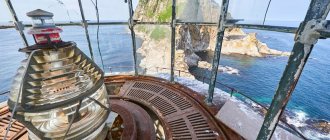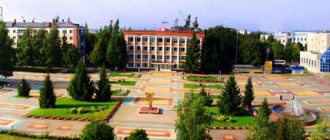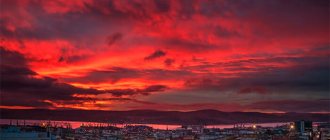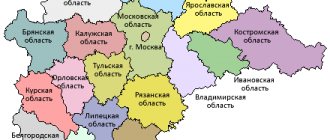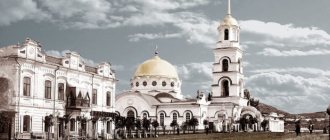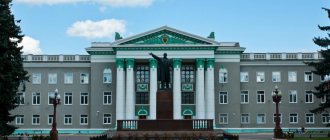History of Mikhailovsk
The emergence of the city is associated with the appearance of the plant. The Mikhailovsky plant was immodestly named after its founder, Mikhail Gubin. Oddly enough, this settlement was not renamed during Soviet times (but it was named after a capitalist!).
The Mikhailovsky plant was launched in August 1808. Previously, this particular date was considered the city’s birthday (as in most other settlements in the Urals, which began with the plant). But in the 2000s, city authorities decided to consider 1805 as the birth date of Mikhailovsk, when construction of the plant had just begun. Although it was possible to “age” Mikhailovsk even more.
The first inhabitants in this area appeared under Nikita Nikitich Demidov in the 1740s. They worked at a saw mill on the Cuba River, built barges, loaded them with iron from the Serginsky factories and sent them from the Ufa pier to Central Russia. The length of the barges reached 54 meters and the width was 8 meters. The carrying capacity was 40 thousand pounds. The Ufa River was calmer and safer than Chusovaya with its numerous fighting rocks. Although the barges sometimes fought here too. Basically, the barges with metal traveled to Nizhny Novgorod, where the products were successfully sold at the Nizhny Novgorod Fair.
The bulk of the population was transferred from the Nizhneserginsky plant to work at the plant. But some of the workers came from the Voronezh province. This is how the Voronino microdistrict arose on the right bank of the Serga. Also in Mikhailovsk there are microdistricts Center and Ufimka (it is located on the Ufa River, where the Ufimskaya pier used to be).
The Mikhailovsky plant was auxiliary. Sheet iron was produced from ingots brought from the Nizhneserginsky plant. The main products were bar and roofing iron; nails were also produced. Cast iron, fused in Ufa from the Ufaley factories, was also used.
Due to unprofitable production, the plant temporarily closed in 1910. Many Mikhailovites moved to work at the Verkh-Isetsky plant. Production recovered during the First World War, then stopped again. The Mikhailovsky plant started operating again only in July 1925. Here they began producing roofing iron again. By the way, many buildings in Sverdlovsk at that time were covered with Mikhailovsky iron, including famous buildings in the constructivist style.
During the Great Patriotic War, the plant was repurposed to produce metal for military equipment, including bimetal for aviation. After the war, the plant underwent a complete reconstruction. A foil rolling shop was launched, and in the 1950s the production of aluminum cookware began. Since then, the life of Mikhailovsk has become connected not with iron, but with the “winged metal” - aluminum.
In 1961, the village of Mikhailovsky received the status of the city of Mikhailovsk.
In 1980, the first rolling mill appeared in Mikhailovsk, making it possible to produce the thinnest foil with a thickness of 7-9 microns. The Mikhailovsky Plant once occupied a leading position in the field of foil rolling.
Unfortunately, now many of the old buildings of the plant have been destroyed, others are ruins. The stone building of a warehouse for technical materials built in 1815, which is an architectural monument, was also damaged.
Another milestone in the history of Mikhailovsk is connected with the paper mill. In 1863, on the Cuba River (at the so-called Anastasyevskaya dam), the Englishman I.E. Yates leased a plot of land from factory owner Mikhail Gubin and built a stationery factory. Yates' products were famous for their quality and were repeatedly awarded medals at exhibitions. In 1884, the factory burned down, but was rebuilt. However, ten years later, in 1894, Yates built a new stationery factory on the Pyshma River, near the village of Kurya. The Mikhailovskaya factory was mothballed.
In 1900, it was bought by local resident Mikhail Filippovich Zakharov. Six years later, he built a new stationery factory on the left bank of the Ufa River opposite the pier. The old factory in Cuba was closed. Then a steam mill and a sawmill operated here, and a water turbine operated. There is still a pond in Cuba; it is called Pilnitsky. It was stocked with carp and trout.
According to local historian Nikolai Khrushchev, in the fall of 1954, in the fall of 1954, in the quarry of a brick factory on Pilnitsky Pond, while excavating clay with an excavator at a depth of 5 meters, a mammoth bone about 60 centimeters long was found. It was not possible to save it and transfer it to the museum, because by order of the master it was thrown away and lost.
The paper mill operated in Ufimka during Soviet times. Typewritten, poster, wrapping, opaque paper, parchment, and fiber were produced here. These days, the factory has closed and ceased to exist.
During the Civil War, a large partisan detachment was hiding from the White Guards in the forests near Mikhailovsk. From time to time, the partisans carried out acts of sabotage, including those that led to the derailment of trains on the nearby Western Ural Railway. And one of the tragic episodes of the civil war took place on Mikhailovsky Pond.
The most famous native of Mikhailovsk is singer and actor Vladimir Troshin (1926-2008). Those who are older, of course, remember his famous “Moscow Evenings”, which became Vladimir Troshin’s calling card. In total, he performed more than two thousand songs. Troshin could make a hit even from a simple song.
According to the 2010 census, 9.8 thousand people live in Mikhailovsk these days. Due to economic problems, the city's population is declining. But there are more and more summer residents who are attracted by picturesque places and relatively favorable environmental conditions. For their beauty, these places are deservedly called the Ural Switzerland.
Mikhailovsk - reviews from those who moved
- + Leave a review
Irina
01/05/2022 at 15:49Answer
We are planning to move to Mikhailovsk from Krasnoyarsk. Please tell us, city residents, is it really possible to buy a one-room apartment in a decent new house for 2-2.5? Why are there so many apartments for sale in the Harmony area? Or are these fakes, like advertisements in the Krasnodar region, but in fact only 18 m2 plinths?
Sofia
01/21/2022 at 18:12Answer
It's true, we live here ourselves
Sofia
01/21/2022 at 18:13Answer
We live here ourselves, only in a house... at first there was an apartment, then we moved into a house... 2 million is the real price of a one-room apartment... they are building a lot of different housing here, both apartments and houses, and townhouses
Andrey
01.11.2021 at 14:30Answer
I live behind the exhibition. Everything is fine, peace and quiet, not far from the lake... I just got used to it and are planning to move again. ((the house is detached, but in general I like it here... The renovation is almost finished... I’m selling.
Belomorets
06.12.2021 at 20:41Answer
Why the move????
Irina
10/11/2021 at 22:01Answer
There are a lot of stray dogs. They scare children coming from school. The puppy whines all night in a row, the dog scares you on the way to the store on the street. Lenina 167/2. A very sad picture...
Troubadour
08/20/2021 at 10:23Answer
Hi all! We live in “Harmony”, we want to move to a separate house without neighbors behind the wall. Exhibition area, Admiral district, who can say anything about them?!
Angie
04/14/2021 at 02:11Answer
And I wanted to add about stray dogs. I agree that there are many of them. And they don't do anything. Once I was going to the store, I was attacked by one, and I was just in fear and shock, well the man saw all this and ran to save me, apparently he saw that she was pregnant and felt sorry. He says these dogs attacked the child yesterday. In other cities they sterilize, there are nurseries. And it’s absolutely brutal here. It’s definitely not possible to load anyone yet….
Angie
04/14/2021 at 01:54Answer
Well, the locals like it here, they don’t know any other life. My husband convinced me that I needed to come here urgently; the medicine was better and there would be more work in the end. The people here are rednecks, a sea of gypsies, medicine is at zero. In Stavropol they are still trying to treat somehow, but here all the doctors are sitting trying to write out a referral to Stavropol because they themselves are stupid. The child broke his leg, they were in Stavropol, everything was fine, they were discharged, after 2 weeks the plaster cracked, we went to the local hospital, so the traumatologist told us, oh, I don’t know how to do something like that on my leg. I put a new one on top of the old plaster and it finally cracked after 2 days. Now we sit in horror and don’t know where to go. In Stavropol they do not accept, only at the place of residence. Everywhere you go there is rudeness and illiteracy. The locals advise us to get out of here, so that’s what we’ll do as soon as we finish, while the child cannot be transported. But of course we need to get rid of this shit right away. And in general, don’t meddle anymore.
Margot
04/12/2021 at 10:17 pmAnswer
We moved to this city from the Irkutsk region and were not mistaken, it’s warm, cozy, no fuss or traffic jams, good environment compared to our industrial city, we really like it
